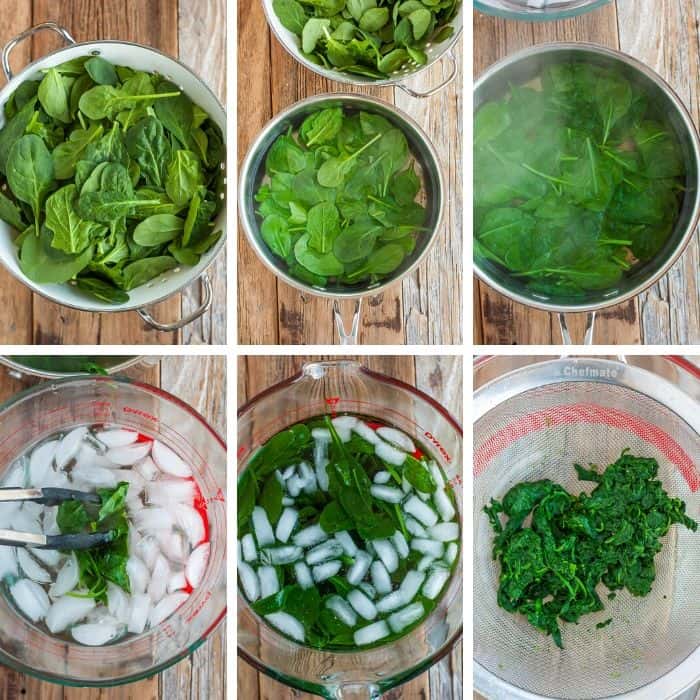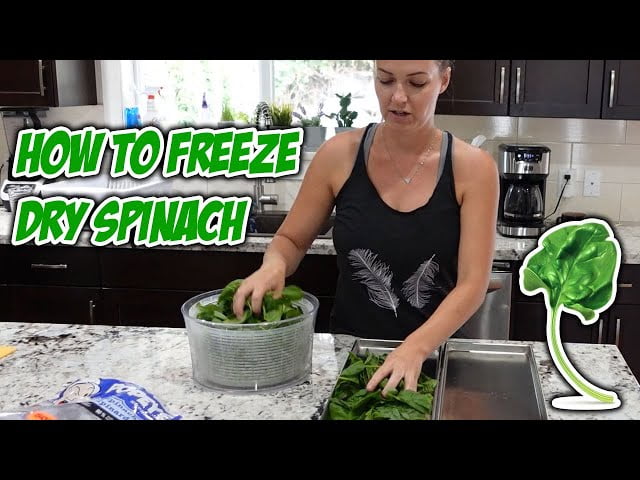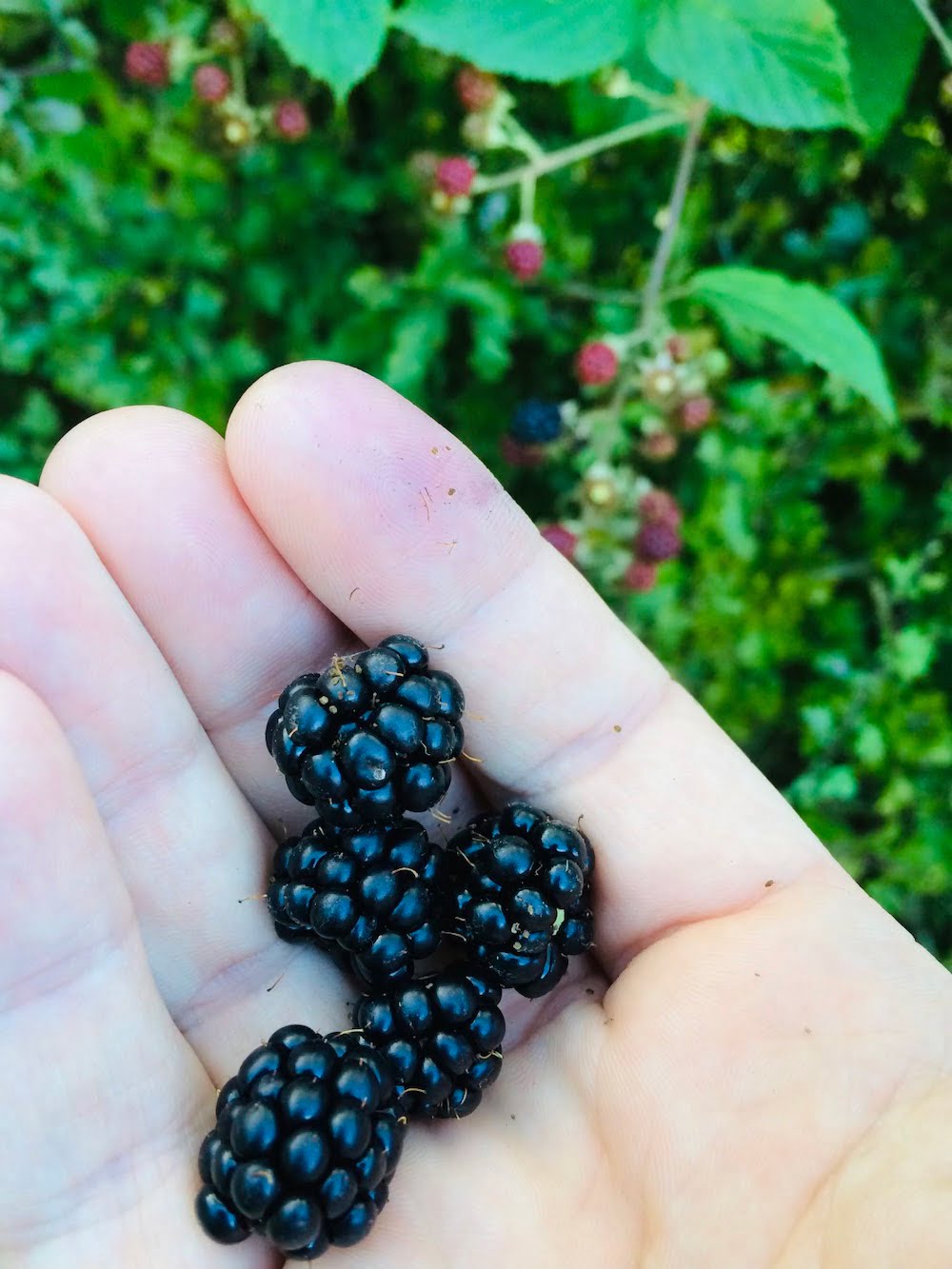So, you’ve always wondered how to freeze dry spinach, huh? Well, you’re in luck because this step-by-step guide is here to give you all the juicy details. From selecting the freshest spinach leaves to finding the perfect freezing method, we’ve got you covered. Get ready to embark on a culinary adventure and discover the wonders of freeze drying spinach. Don’t worry, it’s easier than you think!

Choose Fresh Spinach
When it comes to freeze drying spinach, choosing high-quality leaves is crucial. Look for spinach leaves that are fresh and vibrant green in color. These leaves indicate that the spinach is at its peak freshness and will yield the best results when freeze dried. Avoid any leaves that appear wilted, damaged, or have obvious signs of brown or yellow discoloration. These leaves may not freeze dry properly and can affect the overall quality of the end product.
Wash and Dry the Spinach
Before freeze drying spinach, it’s important to thoroughly wash the leaves to remove any dirt, debris, or pesticides. Place the spinach leaves in a colander and rinse them under cold water, gently rubbing them to ensure all surfaces are cleaned. Once rinsed, gently pat dry the spinach leaves with paper towels to remove excess moisture. It’s important to remove as much water as possible to prevent freezer burn and maintain the quality of the freeze-dried spinach.

Prepare Spinach Leaves for Freezing
To ensure the frozen spinach is easy to work with, it’s recommended to trim off any stems and discard them. Stems can be tough and chewy when freeze dried, so removing them will result in a better texture. Additionally, discard any yellow or brown leaves as they may not freeze dry properly and can detract from the overall appearance of the freeze-dried spinach. If you have larger spinach leaves, consider cutting them into bite-sized pieces to ensure uniformity in the final product.
Blanch the Spinach
Blanching is an essential step in the freeze drying process as it helps preserve the color, texture, and flavor of the spinach. To blanch spinach, bring a pot of water to a rolling boil. Once boiling, carefully add the spinach leaves and blanch them for about 2 minutes. Blanching will help deactivate enzymes in the spinach that can cause it to deteriorate over time. After blanching, quickly transfer the spinach to an ice bath to halt the cooking process and preserve its vibrant green color.

Freeze the Blanched Spinach
After blanching, it’s important to drain any excess water from the blanched spinach. This can be done by gently pressing the spinach leaves between layers of paper towels. Once excess water is removed, spread the spinach on a baking sheet, ensuring that the leaves are in a single layer and not overlapping. Place the baking sheet in the freezer for a few hours until the spinach is frozen solid. Freezing the blanched spinach before freeze drying will help maintain its structure during the drying process.
Transfer to Freezer Bags
Once the blanched spinach is frozen, it’s time to transfer it to freezer bags for long-term storage. Before placing the spinach in the bags, be sure to label them with the date and contents for easy identification. Divide the frozen spinach into meal-sized portions, based on your needs, and seal the bags tightly. It’s important to remove as much air as possible from the bags to minimize the risk of freezer burn and maintain the quality of the freeze-dried spinach.

Invest in a Freeze Dryer
While freeze drying spinach can be done without a freeze dryer, investing in one can offer more efficient and long-term preservation. If you often freeze dry fruits, vegetables, or other foods, a freeze dryer can be a worthwhile investment. When considering purchasing a freeze dryer, it’s essential to research different models and prices to find the one that fits your needs and budget. It’s also important to understand the freeze-drying process to ensure that you can operate and maintain the machine properly.
Pre-Freeze the Spinach
Before freeze drying spinach using a freeze dryer, it’s necessary to pre-freeze the blanched spinach. This ensures that the spinach freezes uniformly and allows for better freeze-drying results. Place the blanched and frozen spinach on the freeze dryer trays, making sure to evenly space them for optimal airflow. It’s important to arrange the trays properly within the freeze dryer compartments to ensure even drying.

Freeze Drying Process
Once the pre-freezing is complete, it’s time to start the freeze-drying process. Set the freeze dryer temperature and vacuum settings according to the manufacturer’s instructions. It’s crucial to follow these instructions carefully to achieve the best results and preserve the quality of the spinach. Start the freeze-drying process and monitor the progress throughout. If necessary, adjust the temperature or vacuum settings as directed by the manufacturer to optimize the freeze-drying process.
Remove and Store the Freeze-Dried Spinach
Once the freeze-drying process is complete, carefully remove the trays from the freeze dryer. Inspect the spinach to ensure it is dry and crisp. Properly freeze-dried spinach should have a brittle texture and no moisture. If any moisture or softness is detected, the spinach may require additional drying time. Once confirmed to be dry and crisp, transfer the freeze-dried spinach to sealed containers. Label the containers with the date and contents and store them in a cool, dry place to maintain the quality and shelf life of the freeze-dried spinach.
Freeze drying spinach is a meticulous process that requires attention to detail and proper techniques. By following these step-by-step guidelines, you can successfully freeze dry spinach and enjoy its nutritional benefits and versatility for an extended period of time. Whether you choose to freeze dry spinach without a freeze dryer or invest in one for more efficient preservation, freeze-dried spinach can be a valuable addition to your pantry and a convenient option for adding nutritious greens to your meals.



